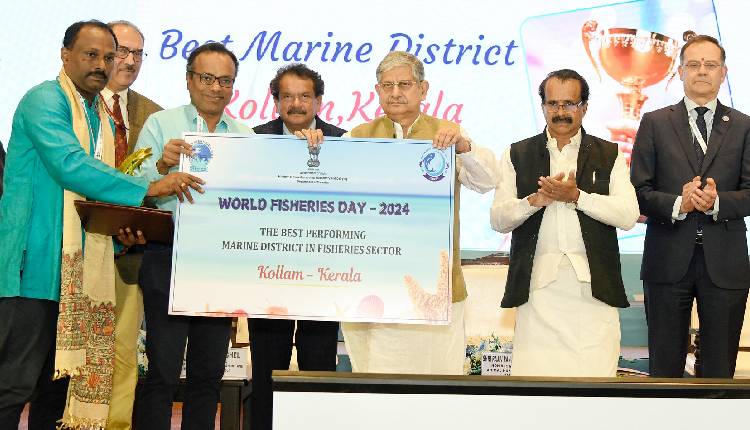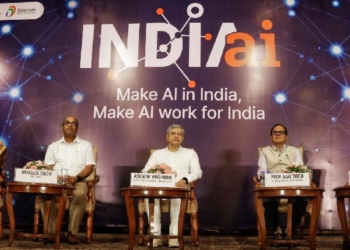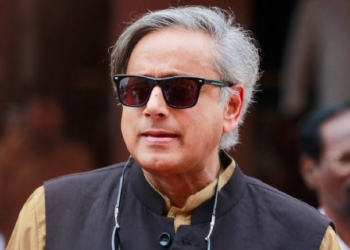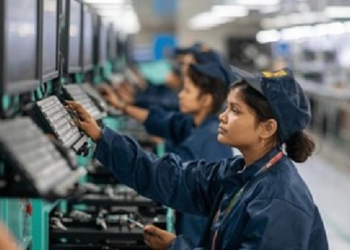New Delhi: India’s annual fish production has nearly doubled since 2014 to 17.5 million tons, with inland fishing now surpassing marine fishing, contributing 13.2 million tons, Union Minister of Fisheries, Animal Husbandry & Dairying Rajiv Ranjan Singh alias Lalan Singh said on Thursday.
In his address here to celebrate World Fisheries Day 2024, the minister said that India has now become the second-largest fish producer globally, with around 30 million people involved in fish production across the value chain. The country accounts for as much as 8 per cent of the world’s total fish production, he added.
He said that various initiatives by the fisheries department like the Blue Revolution, the Pradhan Mantri Matsya Sampada Yojana (PMMSY), and the Pradhan Mantri Matsya Kisan Samridhi Sah-Yojana (PMMKSY) have resulted in boosting fish production in the country.
The Minister also congratulated the fishermen and fish farmers for their role in achieving the target.
Singh launched a series of landmark initiatives and projects aimed at transforming the fisheries sector and strengthening India’s blue economy. These included the launch of the 5th Marine Fisheries Census for data-driven policymaking, the National Plan of Action on Sharks for sustainable shark management and India’s endorsement of the Regional Plan of Action on IUU (Illegal, Unreported and Unregulated) Fishing to prevent illegal, unreported and unregulated fishing in the Bay of Bengal Region jointly in cooperation with Sri Lanka, Bangladesh and Maldives, the International Maritime Organisation-Food and Agricultural Organisation (IMO-FAO) GloLitter Partnership Project to combat marine plastic litter, and Standard Operating Procedures (SOP) for retrofitted LPG kits to promote energy-efficient, low-cost marine fishing fuels.
Additionally, the New Single Window System (NSWS) by the Coastal Aquaculture Authority was launched to enable online registration of coastal aquaculture farms. A signed MoU was also exchanged to implement a framework for the Voluntary Carbon Market (VCM), harnessing carbon-sequestering practices in the sector.
The Union Minister also highlighted issues like plastic pollution, carbon emissions from traditional fishing and water pollution, emphasising the government’s efforts to reduce plastics, improve water quality and promote eco-friendly practices.
Singh mentioned the unorganised nature of the sector and the infrastructural gaps, stressing the need for reforms and initiatives like the Fisheries Infrastructure Development Fund (FIDF). He outlined a vision for sustainable development and economically empowering the fisheries sector, focusing on modern techniques, policy integration and long-term goals to ensure India’s global leadership in fish production.
Speaking on the occasion, Manuel Barange, ADG and Director Fisheries Division FAO, Rome, emphasised the global challenges of hunger and malnutrition, highlighting the need for innovative solutions to feed a growing population. FAO’s Blue Transformation Initiative was presented during the event, focusing on sustainable aquaculture development, effective fisheries management, and enhancing aquatic food value chains.
Progressive states, Union Territories (UTs), districts, and individuals were honoured for their remarkable contributions to the growth of the fisheries and aquaculture sector in India.
Kerala received the award for the Best Marine State, while Telangana was recognised as the Best Inland State. Uttarakhand earned the title of Best Himalayan and Northeastern State, and Jammu & Kashmir was awarded Best Union Territory. Among the districts, Kerala’s Kollam won the Best Marine District award, Chhattisgarh’s Kanker was named Best Inland District while Assam’s Darrang received the Best Himalayan and Northeastern District award and Kulgam in Jammu & Kashmir was honoured as the Best District in a Union Territory.
(IANS)
















